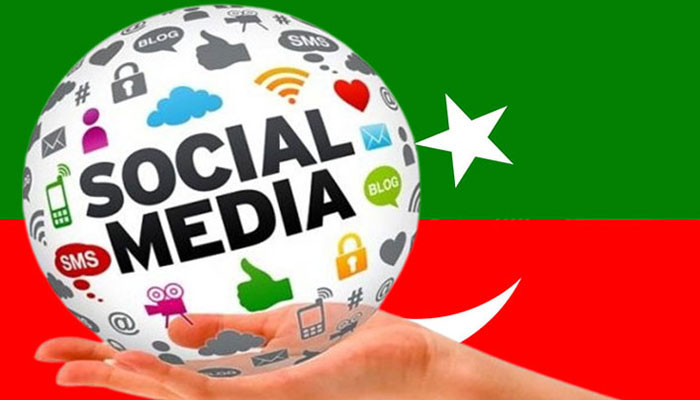Beyond the courtroom battles, Khan’s political strategy further expanded to include explicit calls for civil disobedience, urging his supporters to boycott political processes, refuse to accept state actions, and reject the authority of elected institutions. This tactic further illustrated a fundamental rejection of established democratic channels for redress—such as parliament and the judiciary—in favor of extra-constitutional pressure and street power. Seasoned political analysts argue that the cumulative and synergistic effect of these actions—the pervasive conspiracy theories, the violent protests, the legal defiance—poses a grave and existential threat to Pakistan’s fragile constitutional order. They warn that publicly attacking the military and intelligence agencies with sensational accusations of treason, while simultaneously mobilizing impassioned crowds to physically target state symbols, creates a dangerously combustible environment that escalates tensions to a breaking point and risks provoking a destabilizing cycle of severe crackdowns and violent reprisals, ultimately eroding public safety, democratic norms, and the social contract.
The most potent, modern, and insidious weapon in this extensive arsenal, however, has been the waging of sophisticated digital warfare. Astonishingly, from the confines of his incarceration, Imran Khan’s presence on social media platforms, particularly on X (formerly Twitter), has been nothing short of prolific, sustained, and strategically coherent. With a combined following exceeding 34 million across his official and affiliated accounts, his digital reach acts as an incredibly powerful political force multiplier, allowing him to bypass traditional media gatekeepers and speak directly to the masses in an unfiltered manner. His posts, often sharply critical and contemptuous of the military leadership and judiciary, are amplified hundreds of thousands of times through an organized network, shaping public perception with unprecedented speed and scale. However, this immense influence carries a profoundly dark side. Security analysts and government officials directly link his specific online rhetoric to real-world agitation, civil unrest, and even acts of violence. For instance, the posting of sensitive and selectively edited content from the historical Hamoodur Rahman Commission Report from his verified account was not seen as historical debate but as a deliberate attempt to target the morale of the armed forces, prompting a serious state investigation into its potential impact on national unity.
The very architecture and command-and-control of this digital campaign are themselves a subject of intense scrutiny and investigation. Official probes actively challenge PTI’s public claim of running a decentralized, organic, volunteer-led online movement. Leaked intelligence reports and investigation details point instead to a highly centralized and disciplined command structure, with Khan’s sister, Aleema Khan, allegedly acting as a pivotal conduit, relaying instructions and talking points from the jailed leader to overseas handlers and social media teams who then coordinate and execute messaging across verified PTI platforms. This suggests a highly managed, top-down information operation bearing the hallmarks of a psychological operation rather than genuine grassroots activism, designed to create a false narrative of spontaneous public outrage.
A particularly alarming and geopolitically sensitive dimension of this digital strategy is its perceived convergence, whether intentional or coincidental, with the strategic interests of hostile foreign powers. Security analysts note a striking and persistent synergy between Khan’s narratives and the coverage of major Indian news channels, which amplify his most critical statements against the Pakistani state within minutes of them appearing online, often during primetime news bulletins. This “mirror effect,” whereby Indian media gives wall-to-wall coverage to his claims of army interference, judicial corruption, and foreign conspiracies, has raised serious alarms within Pakistan. The concern is that Khan’s digital campaign, regardless of its original intent, is being leveraged and amplified by adversaries like India’s intelligence agency, RAW, to fuel internal divisions, destabilize Pakistan, and wage a cost-effective hybrid war. This suspicion is gravely compounded by the selectively curated nature of his messaging: while constantly questioning the state’s legitimacy and actions, his accounts remain conspicuously and consistently silent on terrorist attacks against the very security forces he criticizes, thereby indirectly reinforcing Indian propaganda narratives that seek to paint Pakistan as an internally repressive and failing state rather than a nation battling existential external threats.
This alleged anti-state agenda extends beyond mere rhetoric and digital manipulation and into the critical, life-and-death realm of national security governance and policy. The PTI-led government in the strategic province of Khyber Pakhtunkhwa (KP), which shares a long and porous border with Afghanistan, is repeatedly accused of actively obstructing the nation’s counter-terrorism efforts and creating policy confusion. As reported by international publications like The Diplomat, a dangerous and potentially deadly policy divergence exists between the federal government and the KP administration. While the national center, having learned from what it views as the failed and costly appeasement policies pursued during Khan’s own premiership, has firmly ruled out negotiations with the proscribed terrorist group TTP, the KP government, still taking its cue from the jailed PTI leadership, has not fully embraced this unified national stance. This lack of cooperation and coordination in the face of a severe terrorism surge emanating from Taliban-controlled Afghanistan is seen by security experts not as a simple political disagreement, but as a grave dereliction of duty that compromises the security of the country and the safety of its citizens, effectively prioritizing political point-scoring over national security.
The actions and strategies employed by Imran Khan and the PTI since April 2022 form a complex and multi-layered tapestry of political resistance that, in the view of citizens, analysts, and state institutions, has morphed into a concerted and dangerous campaign against the state itself. From the foundational allegations of foreign plots and the incitement to violence witnessed on May 9th, to the sophisticated digital warfare strategy that appears to unnaturally align with adversarial narratives, and further to an obstructive and non-cooperative approach on critical national security matters, their activities are perceived as prioritizing personal and political interests over national stability and solidarity. This occurs at a critically precarious time when the Pakistani nation, demonstrating remarkable unity in the face of formidable economic and security challenges, increasingly demands that all political grievances be channeled through constitutional and legal frameworks, and that strict, unwavering action be taken against all those who would seek to harm the state from within, either for personal ambition or, worse, by advancing the agendas of the nation’s enemies. The resilience of the state is being tested against a new form of insidious warfare that operates in the digital and cognitive domains, challenging traditional notions of political opposition and national loyalty.






Comments are closed, but trackbacks and pingbacks are open.